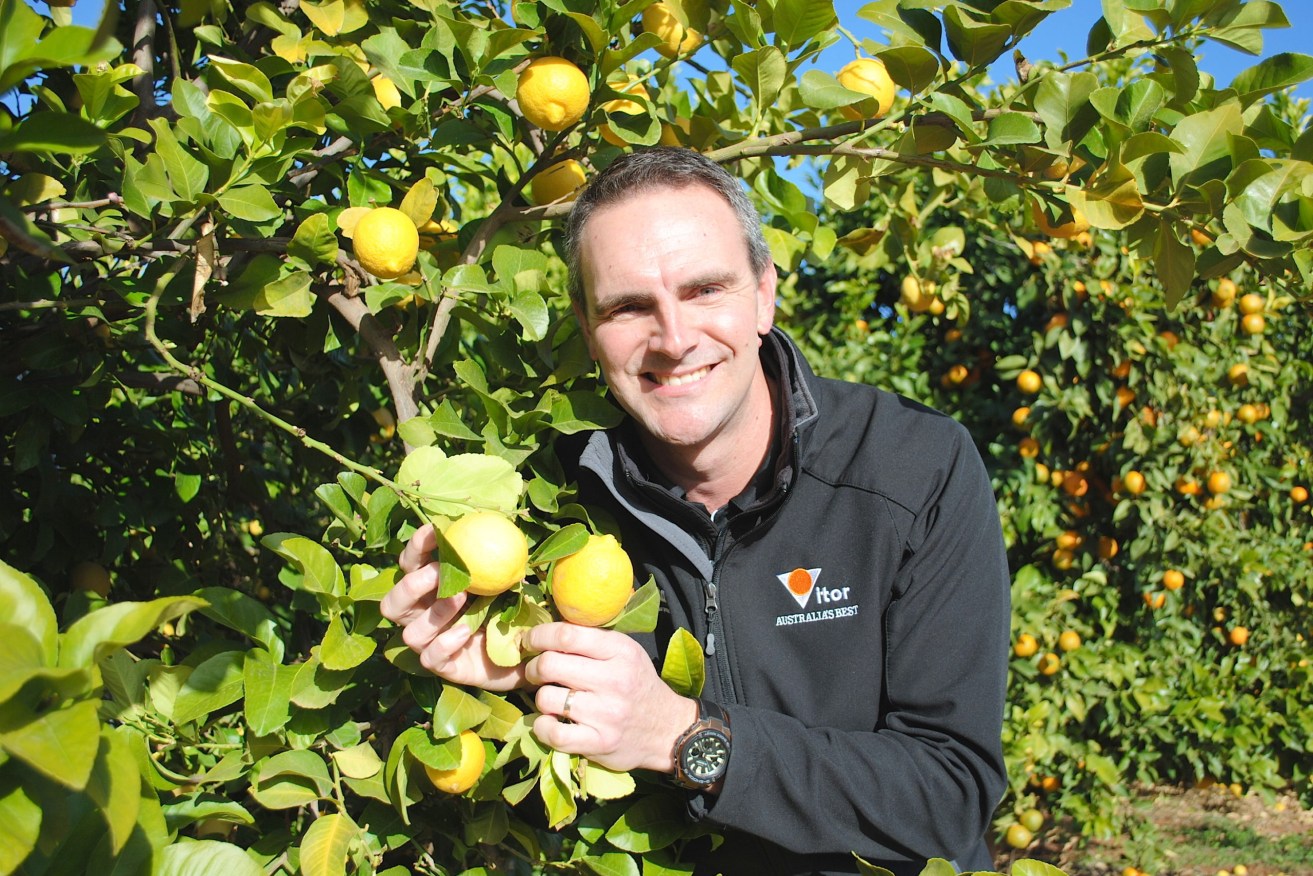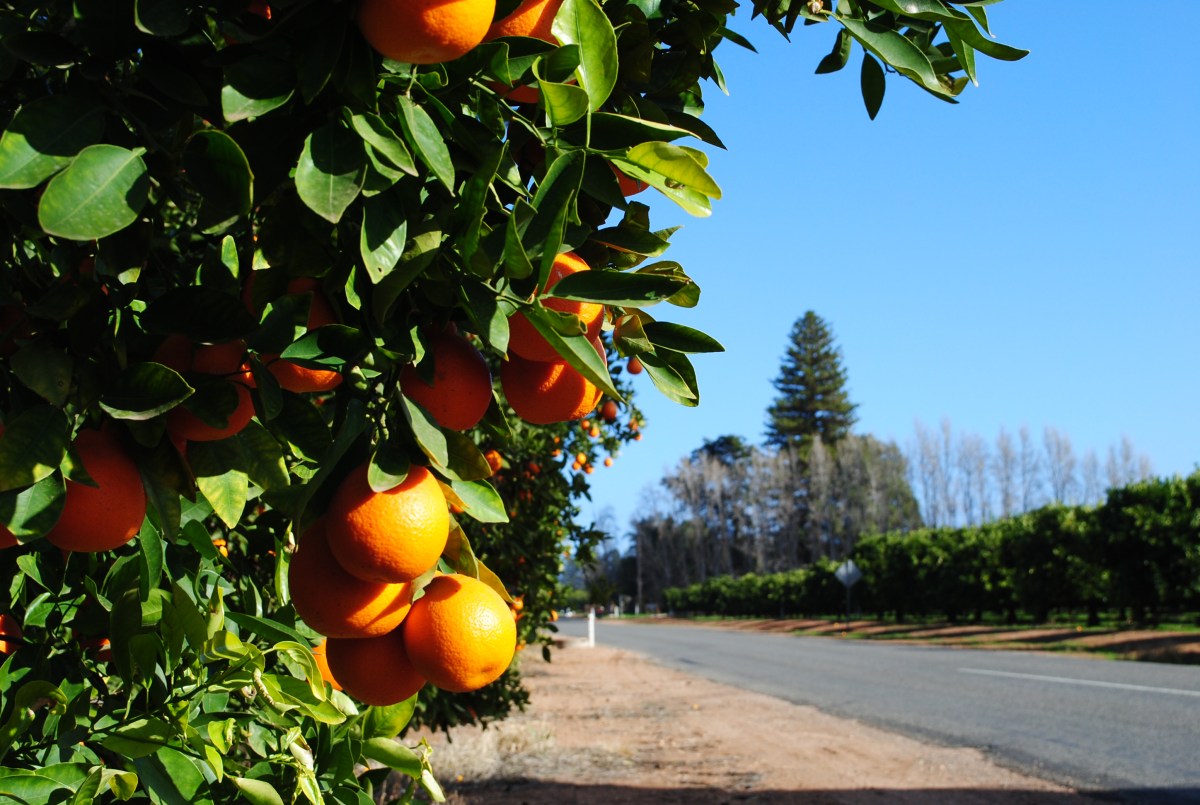Call for pickers to harvest Riverland citrus
Riverland citrus growers are facing a promising but unpredictable season as South Australian industry leaders scramble to secure pickers and export markets amid COVID-19 challenges.


Citrus Australia chairman Ben Cant says this year's citrus crop is looking promising. Picture: Belinda Willis.
Citrus Australia chairman Ben Cant said while crops looked promising, the industry needed about 30,000 workers nationally over the next six months to pick fruit.
Industry leaders have successfully lobbied for work visas for backpackers or South Pacific Islanders still living in Australia to be extended, and Cant hoped that would support Riverland growers expected to begin harvesting oranges around Anzac Day on April 25.
The Riverland is the third largest citrus growing region in Australia with about a third of its 180,000 tonnes of fruit hand picked.
However, its high proportion of navel oranges and ideal growing conditions make it a leading exporter of premium table oranges.
Cant is also citrus supply manager for the Costa Group that has 2300 hectares in the Riverland and accounts for up to 60 per cent of the South Australian citrus harvest.
At peak harvest the company employs about 1000 workers and the regular pool now faced strict border restrictions.
“We would always employ locals as a preference but in a town of 10,000 people in Renmark that is difficult,” he said.
“COVID-19 is having a profound influence on wholesale markets, supermarket distribution and getting workers to the farm.
“None of these backpackers qualify for welfare, we can keep them gainfully employed, they are high risk and vulnerable.”
Many workers that Costa Group has previously employed through the Federal Government’s Pacific Islander Scheme were still in the country and they were also now eligible to have work visas extended.
Cant said it was particularly important to have experienced workers as fruit needed to be harvested and handled correctly to ensure it was not damaged.
About 50 per cent of the South Australian citrus crop is exported.
Cant said the industry was cautiously optimistic freight shipments would continue to key markets in China and Japan.

Table grapes are still getting to overseas markets and, along with citrus could again prove in high demand. Following the SARS virus in 2003 there was a spike in demand for high Vitamin C fruit in Asia.
“I think the one thing we’re clinging onto with all of this is we have particularly with oranges but also mandarins, we have a pretty highly concentrated fruit with Vitamin C consumption,” Cant said.
“With the world in the grips of coronavirus, we are hearing anecdotally that even in South Australia the imported citrus, as it is not in season here, from the USA and Egypt, sales have grown by 50 per cent.
“We have some history where post SARS in China, sales tripled in volume.
“We only need 300 million middle class Chinese people thinking ‘I should eat an orange this week or day’, and all of a sudden, sales would go through the roof.”
This year’s crop is also looking promising, with an average crop size but high sugars, Cant said.
Some growers are struggling with damage from hail storms in November but Cant said lower scaled fruit showing blemishes could still be sold for juice or as lower grade product to secondary export markets in the Philippines, Indonesia and Malaysia.
Citrus Australia has immediately supported the industry by gathering documentation from state and federal governments to collate a toolbox for growers and citrus packing sheds around COVID-19 best practice.
Information covers ensuring workplaces are meeting guidelines and how to respond if staff members are unwell.
Local accommodation businesses targeting harvest workers are also changing configurations and business models to cater for new social distancing rules.
“I think growers and packing sheds are optimistic about the season, the returns they could receive, but there are concerns,” Cant said.
“It’s a very difficult position because you know your crop is worth probably a large amount of money, the challenge is going to be turning this year’s crop into cash.
“But in South Australia, we might not be the biggest state but we are tight knit and we do what we need to do to get things done.”
The ASX listed Costa Group is one of the Riverland region’s largest employers employing about 900 harvest workers and another 200 to 300 in the packing and marketing areas.
It was founded in the 1970s and the citrus category of the business last year has a turnover of about $120 million, the Japanese market is a key driver and exports also travel to China, the USA and South East Asia, and New Zealand.
Want to comment?
Send us an email, making it clear which story you’re commenting on and including your full name (required for publication) and phone number (only for verification purposes). Please put “Reader views” in the subject.
We’ll publish the best comments in a regular “Reader Views” post. Your comments can be brief, or we can accept up to 350 words, or thereabouts.




